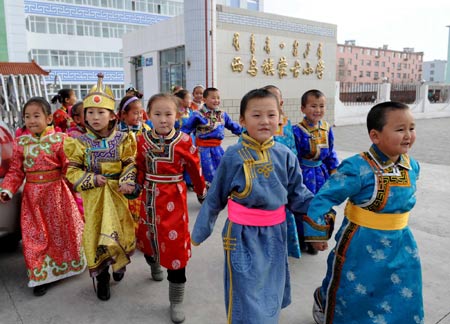Agriculture in Mongolia
| Source: mytripblog.org Mongolian Herders |
Agriculture is one of Mongolia's strongest and primary industries. In fact, almost half of the population is engaged in the agricultural industry. With a livestock population of 30 million, people are outnumbered ten-to-one. Mongolia's harsh climate makes traditional cultivation impossible. In fact, only 1% of Mongolia is cultivable. This means that livestock is the primary form of agriculture. Most of the livestock consists of: sheep, yak, goats, cattle, camels and horses. Aside from the livestock, the only main crops that can be grown in Mongolia's rough environment consist of: wheat, barley, potato, cabbage and carrots.
 |
| Source: ADRA (Adventist Development and Relief Agency) Mongolia's harsh climate makes farming difficult |
As mentioned before, Mongolia's harsh climate makes farming difficult and nearly impossible. Being an ex-Soviet satellite country, Mongolia's wells and watering holes, once maintained collectively were left to deteriorate. The lack of pasture management, combined with summer droughts and dzuds (slow winters), have prevented herders from stocking enough fodder for the winter months. Poor management skills, inadequate input systems and low quality seeds have contributed to an 80 per cent fall in overall productivity and, while wheat yields have begun to recover, they remain low. With a lack of markets and proper food storage techniques, much of Mongolia is facing concerns about food safety. Regardless, Mongolia is still ranked highly for it's agricultural land.
"New Agriculturist." : Country Profile. Web. 29 Mar. 2015.





